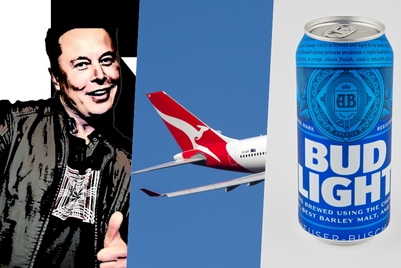This film for Gudang Garam, by Dentsu One and Seven Sunday Films, marks the 71st anniversary of Indonesia's independence day, which is today. (Congratulations, Indonesia!)
The film is beautifully shot, full of patriotic images, and has stirring music. It focuses on determination and stirs strong feelings—even in a non-Indonesian.
There's nothing wrong with it per se, and if it had almost any other brand's name at the end, I could laud it as excellent work and move on. But because it's from a tobacco company, several aspects demand scrutiny.
First, the film has many shots of people performing feats of athletic prowess. We see football players, military recruits and a group of energetic dancers all engaged in rigorous physical activities—activities that surely demand healthy, functioning lungs.
For a tobacco company to associate itself with athleticism is simply outrageous. When a young man in the video finds himself face down in the mud during a training run, my first thought is that he must have collapsed from lack of oxygen due to his smoking habit.

But it gets worse. What really sets off my evil detector is several shots of teenagers—children—playing football. Yes, children, in a film sponsored by a tobacco purveyor.
As you're no doubt aware, Indonesia famously has well-documented issues with smoking in general and particularly with young people smoking. According to the Ministry of Health:
- More than one-third of Indonesians over the age of 10 smoke.
- Between 2001 and 2010, the number of people who started smoking between the ages of 10 and 14 rose by 80 per cent, while the number who started between 5 and 9 years of age quadrupled.
(The startling statistics above come from this excellent 2013 article, which also describes how furiously the tobacco industry fights anti-smoking efforts in Indonesia.)
Then there's the national pride aspect. Like Petronas in Malaysia, Gudang Garam is associating itself with patriotism. And as it's a national brand, the implicit message is that Indonesians should be proud of and support Gudang Garam too. Ergo, lighting up essentially becomes a patriotic act.
From a pure marketing standpoint, that's genius. But from any other standpoint? Evil. Here we have a company whose primary product only undermines health, but it's trying to link itself with healthy activities. Its primary product only leads to addiction, but it's wrapping itself in the mantle of freedom.
You have to admit the company has a lot of gall.
I know that it's easy to pick on tobacco companies. Yet here it is 2016, and we have a tobacco concern plying its deadly trade, and at least on some level targeting children.
More to the point for our industry, agencies and producers are complicit in the process. I'm not blaming the underlings who worked on this. Everyone has to eat, and creative people in emerging markets don't get many chances to work with big budgets. I even have some amount of empathy for the temptation agencies and production houses feel to work with tobacco clients. They're trying to run their businesses, which ultimately feeds their employees and their families.
And yet... While the brand is certainly going to do whatever it can to serve its own goals, the rest of us have a choice. Someone, somewhere could say 'No, we won't be a part of this'. At the very least, someone could insist on keeping children out of it. And maybe, if someone, somewhere said 'No', other people would hear that call and put their feet down too.
In my native land, the US, agencies only stopped doing tobacco ads when tobacco ads were outlawed (and the cessation of advertising coincides with a long, steady drop in the number of smokers). Indonesia has some restrictions on tobacco advertising, but agencies could actually lead the way on this issue. Turning away revenue might require support at the agency-network level, or even the holding-company level. But there's an opportunity to do real good—not the pretend kind that sometimes wins awards. Couldn't an industry that has received some black eyes lately use a chance to look like a hero?
Instead, Seven Sunday says in a press release that "Gudang Garam is creating a legacy with epic and heroic Independence Day films."
I agree that Gudang Garam, and its competitors (including MNCs), are creating a legacy in Indonesia. But it's a legacy of disease and abject misery. Is that a legacy you want to be associated with? Can you really convince yourself that because the film isn't showing smoking, it's somehow not promoting smoking? How heroic can you feel when you are well aware of the terrible impact smoking has on millions of real people?
This is not the only piece of Gudang Garam marketing we've questioned lately, but the other one (titled 'The Birds') was merely vacuous and pointlessly odd. This one is full-on reprehensible. Indonesia deserves better for its independence day. And Indonesian kids, especially, deserve to be protected from the tobacco industry—not lured by it.
 Matthew Miller is Campaign Asia-Pacific's online editor. Matthew Miller is Campaign Asia-Pacific's online editor. |


.jpg&h=334&w=500&q=100&v=20250320&c=1)



.png&h=334&w=500&q=100&v=20250320&c=1)

.png&h=334&w=500&q=100&v=20250320&c=1)

.png&h=334&w=500&q=100&v=20250320&c=1)


.jpg&h=268&w=401&q=100&v=20250320&c=1)


.jpg&h=268&w=401&q=100&v=20250320&c=1)
.png&h=268&w=401&q=100&v=20250320&c=1)

